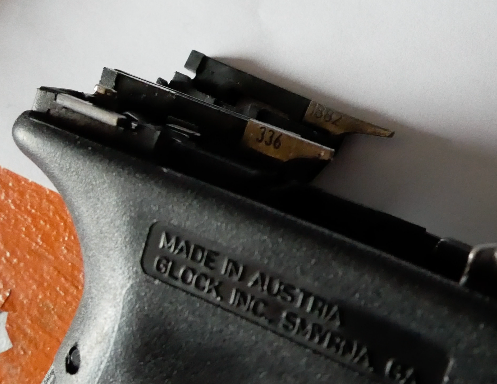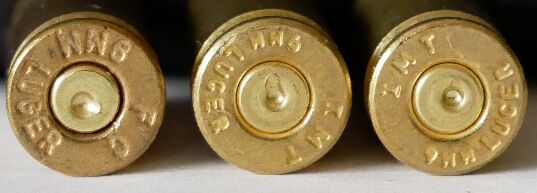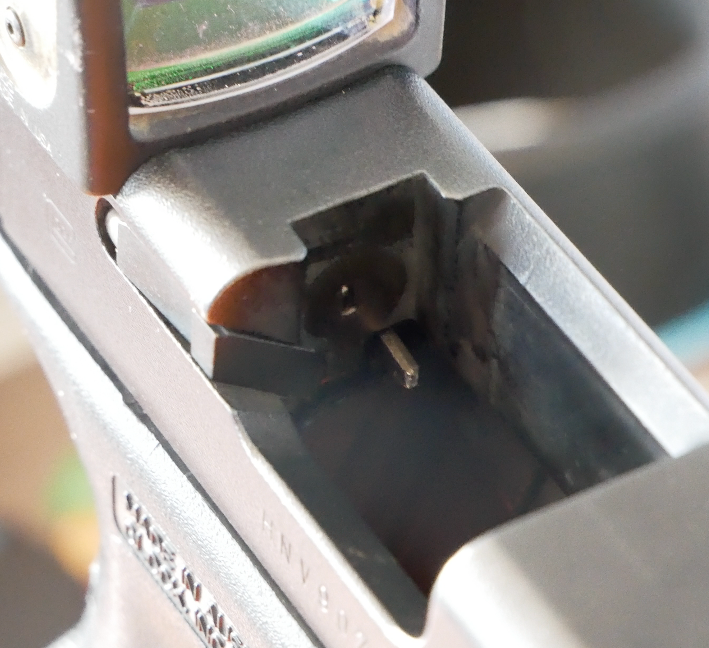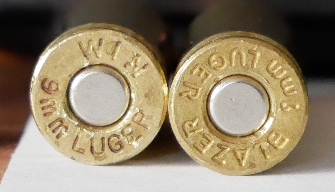The following photographs are from a conversion of a .40 S&W Glock 22 Gen 3, to a 9x19mm. Although most parts are OEM, bare in mind this is in no way representative of what a stock Glock is, and is an indication to be mindful when converting a .40 S&W Glock to fire 9x19mm rounds.
I initially had this Glock 22 for some years, because I decided to jump on the 9x19mm bandwagon, while retaining the capabilities of a .40 S&W barrel should I ever need it. Most conversions go flawlessly, but mine for some reason was the biggest headache. Starting with a Lone Wolf 9x19mm barrel, having problems (ejection and extraction issues). Then changed out the extractor to a 9x19mm, still having problems. Changed out the ejector to a 9x19mm, only to find out the extractor was dented, so ordered a new extractor, with the 9x19mm ejector.
Initially all seemed to be going well, I was able to reliably load and unload an entire magazine of live ammunition. By the way, if you are going to test loading and unloading and don’t want to use live ammunition, make sure you have dummies of the same weight and material (inert rounds) as live rounds. This is because the aluminum or plastic dummies simply don’t perform like their live cousins would.
But I digress. I noticed some of the rounds, instead of being flung to the right, were shooting straight forward of the handgun. I thought that was odd, usually live rounds or even empties don’t project themselves forward of a semi-automatic handgun when ejected. I took a look at the rounds, and I was very shocked to find light primer strikes!
The primer strikes weren’t from the striker, as Glocks don’t have floating firing pins like AR15s do. They were from the tip of the ejector. As the rounds made their rearward journey with the extractor, the ejector surface was engaging some of them on the primer, instead of the actual case, where they should have been engaged. Very alarmed, I looked at the rest of the rounds and sure enough, every single one of them had primer strikes either on the primer, or around the edges of the primer. Only about a quarter were serious enough for me to thank my lucky stars I always keep the firearm pointed in a safe direction.
The difference between an OEM 9x19mm ejector, which is labeled as “336” from the factory, and an OEM .40 S&W ejector (labelled 1882) is that the 9x19mm one is “hooked” to the right, so as to catch the smaller diameter of the 9x19mm casing, compared with the larger .40 S&W casing which is much larger and is straight.
Now, could a primer have actually been detonated by the extractor on its way out of the slide? Maybe, maybe not. But if you look at these expended 9x19mm casings, the amount of depth difference between a successful primer strike, and a light one is much too close for comfort for what I want.
Determined to solve the problem, I took a pair of pliers and tried to bend the “hook” portion of the extractor to the left, so it would instead engage the actual casing, instead of the primer. Dufus me, I snapped a little bit of the ejector clean off.
But this was actually a blessing in disguise, because I attempted to load and unload rounds again, to see if maybe this would have made a difference. Incredibly, it did. Ejection was still excellent, flinging live rounds far and wide of the handgun, with none to the front. Then examining the actual casings, the extractor strikes had moved to the left side of the primer, onto the actual shell where I wanted them there the whole time.
Please let my alarm be a lesson for all who want to convert Glock .40 S&W handguns to 9x19mm. As stated previously, the overwhelming majority of conversion cases do work perfectly fine, without having to change out the extractor and ejector to 9x19mm. Granted, with the changing of the times, you’d be much better off with going for a dedicated Glock in 9x19mm instead of messing with any of this conversion business. Much in the past decade is pointing to .40 S&W being lead out of the door of effective handgun calibers. But even so, .40 S&W still is apart of the big three (9mm,.40, .45) when it comes to popular semi-automatic handgun cartridges.
However with my particular case, probably due to some infinite variable of nanometer dimensions, the ejector just wasn’t working the way it should have, striking rounds on the rim of the shell instead of the primer. Perhaps nothing would have come of this ejector had I never observed the strikes or even bothered to alter it. But in this case, I’d much rather be playing safe than sorry.
 Your Privacy Choices
Your Privacy Choices







